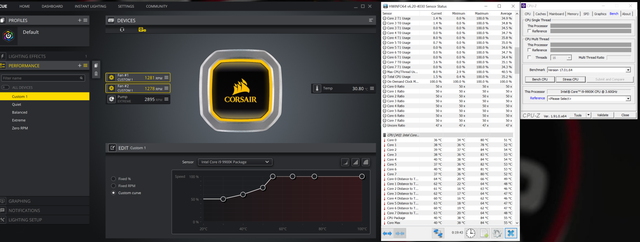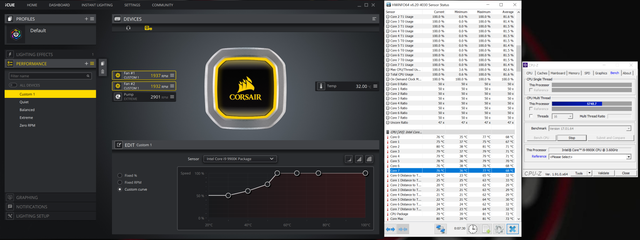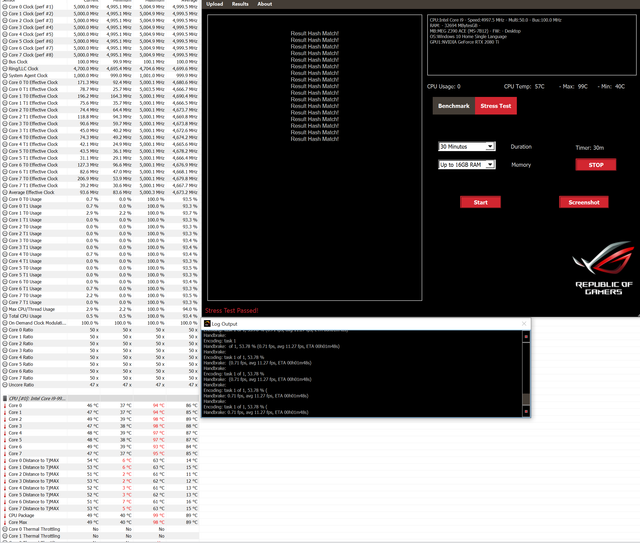So it's not much worth to change from a 9900K to a 9900KS so i have been tinkering with overclocking my 9900K and wanted to show my results so far to ask if this is good or if it would be worth it to beef up the AIO to a 360 (would i see any drastic changes in temps?)
Specs:
i9-9900K
MSI MEG Z390 ACE
Corsair h115i Platinum 280 AIO
TridentZ CL17 3600MHz 32G Memory (4X8)
Nvidia 2080 Ti FE 11G
Samsung NVMe M.2 512G & 1TB
EVGA Supernova 750W P2 Platinum
This first pic is running CPU-Z for 10 minutes stressing the CPU. Voltage was set on this test to 1.30V. I think its a little on the hot side. I do have a custom fan curve set on the cooler and have it maxed out.
https://ibb.co/CsZKzJ4

Next i dropped the voltage some more as it was just to hot for my liking. I wanted to see if i could get the voltage down without crashing and to also try to see if i just need to step up to a 360 AIO. Again this is with CPU-Z running for 10 mins with the voltage set at 1.27V and i also snapped this pic while the test was in progress to see my fan curve. ( i just couldn't get those fans to hit 2,000 RPM's - and they got loud lol). Got some cooler temps on this one a bit.
https://ibb.co/xmSd3Ym

Then finally one more test at 1.25V and i stopped here to get some advice on if i should keep inching the voltage down or call it good or try something a little more aggressive to put the CPU through. Temps came down a little more too as expected.
https://ibb.co/TqZCNM7

Thanks in advance for any tips or tweak idea's.
Specs:
i9-9900K
MSI MEG Z390 ACE
Corsair h115i Platinum 280 AIO
TridentZ CL17 3600MHz 32G Memory (4X8)
Nvidia 2080 Ti FE 11G
Samsung NVMe M.2 512G & 1TB
EVGA Supernova 750W P2 Platinum
This first pic is running CPU-Z for 10 minutes stressing the CPU. Voltage was set on this test to 1.30V. I think its a little on the hot side. I do have a custom fan curve set on the cooler and have it maxed out.
https://ibb.co/CsZKzJ4

Next i dropped the voltage some more as it was just to hot for my liking. I wanted to see if i could get the voltage down without crashing and to also try to see if i just need to step up to a 360 AIO. Again this is with CPU-Z running for 10 mins with the voltage set at 1.27V and i also snapped this pic while the test was in progress to see my fan curve. ( i just couldn't get those fans to hit 2,000 RPM's - and they got loud lol). Got some cooler temps on this one a bit.
https://ibb.co/xmSd3Ym

Then finally one more test at 1.25V and i stopped here to get some advice on if i should keep inching the voltage down or call it good or try something a little more aggressive to put the CPU through. Temps came down a little more too as expected.
https://ibb.co/TqZCNM7

Thanks in advance for any tips or tweak idea's.
Last edited:



